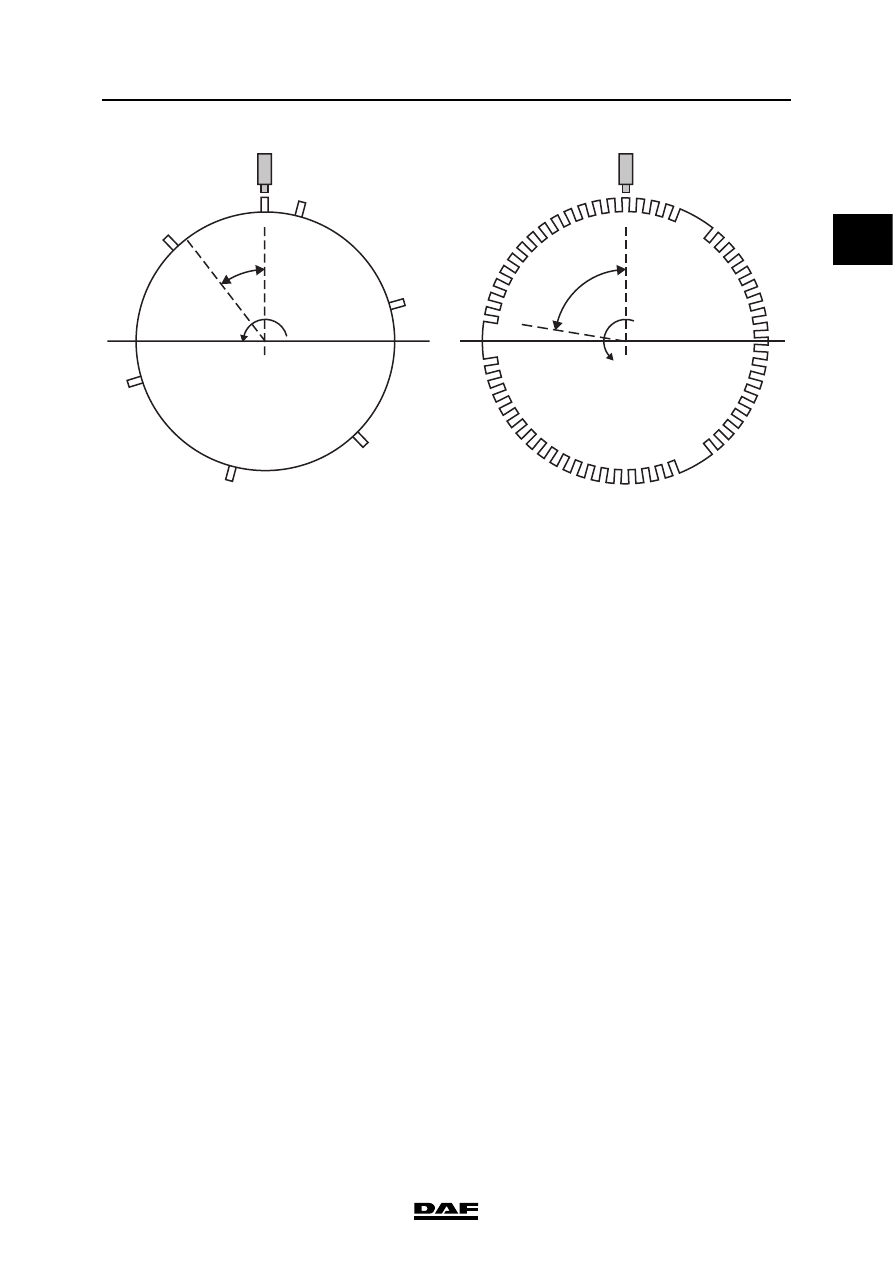DAF XF105. Manual - part 98

1
©
200528
3-11
Control functions
DMCI ENGINE MANAGEMENT SYSTEM
XF105 series
Synchronisation is complete when a camshaft
pulse is sent by the camshaft sensor between the
14
th
and 15
th
pulse of the crankshaft signal. This
pulse is the synchronisation pulse (S). The
synchronisation pulse must be detected within
two crankshaft revolutions. If this is not the case,
this indicates that something is wrong with the
timing of the engine (mechanical fault) or with the
sensor signals (electrical fault). If one of the
sensor signals is absent, synchronisation cannot
take place.
CRANK
CAM
13
1
18
18
15
14
5
1
S
3
6
2
4
i400709